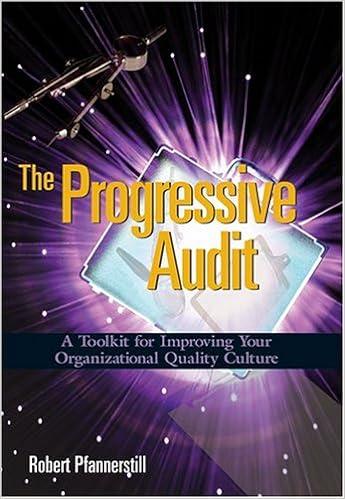
 May i have the answers to A, B and C
May i have the answers to A, B and C
Astoms Asbestos Ltd is in the business of removing potentially toxic asbestos insulation and related products from buildings. There has been a long-simmering dispute between the company's estimator and the work supervisors. The on-site supervisors claim that the estimators do not take enough care in distinguishing between routine work such as removal of asbestos insulation around heating pipes in older homes and non-routine work such as removing asbestos-contaminated ceiling plaster in industrial buildings. The on-site supervisors believe that non-routine work is far more expensive than routine work and should bear higher customer charges. The estimator sums up his position in this way: "my job is to measure the area to be cleared of asbestos. As directed by top management, I simply multiply the square metreage by 2.50 to determine the bid price. Since our average cost is only 2.175 per square metre, that leaves enough cushion to take care of additional costs of non- routine work that shows up. Besides, is difficult to know what is routine or not routine until you actually start tearing things apart". Partly to shed light on this controversy, the company initiated an activity-based costing study of all of its costs. Data from the activity-based system follow: Activity measure Activity cost pool Job size Thousands of square metres Number of jobs Estimating and job set-up Dealing with non-routine jobs Number of non-routine jobs Not applicable Other (costs of idle capacity and organisational sustaining costs) Costs for the year Wages and salaries Disposal fees Equipment depreciation On-site supplies Office expenses Licensing and insurance Total cost 300,000 700,000 90,000 50,000 200,000 400,000 1,740,000 Distribution of resources consumption across activities Estimating and Dealing with: Size Job Set-Up Non-Routine Jobs Other 50% 10% 30% 10% Wages and salaries Disposal fees 60% 0% 40% 0% Equipment depreciation 40% 5% 20% 35% On-site supplies 30% 10% 0% Office expenses 35% 25% 30% Licensing and insurance 0% 50% 20% Activity cost pool Activity for the year Job size 1600 thousand square metres Estimating and job set-up 1000 jobs Dealing with non-routine jobs 200 non-routine jobs Required: (a) Perform the first-stage allocation of costs to the activity cost pools. (20 Marks) (b) Compute the activity rates for the activity cost pools. (20 Marks) (c) By referring to the long-simmering dispute between the company's estimator (estimator's position) and the work supervisors, explain how ABC system can address the distortions or disputes that may be associated with contract estimates. (10 Marks) 60% 10% 30% Total 100% 100% 100% 100% 100% 100% Astoms Asbestos Ltd is in the business of removing potentially toxic asbestos insulation and related products from buildings. There has been a long-simmering dispute between the company's estimator and the work supervisors. The on-site supervisors claim that the estimators do not take enough care in distinguishing between routine work such as removal of asbestos insulation around heating pipes in older homes and non-routine work such as removing asbestos-contaminated ceiling plaster in industrial buildings. The on-site supervisors believe that non-routine work is far more expensive than routine work and should bear higher customer charges. The estimator sums up his position in this way: "my job is to measure the area to be cleared of asbestos. As directed by top management, I simply multiply the square metreage by 2.50 to determine the bid price. Since our average cost is only 2.175 per square metre, that leaves enough cushion to take care of additional costs of non- routine work that shows up. Besides, is difficult to know what is routine or not routine until you actually start tearing things apart". Partly to shed light on this controversy, the company initiated an activity-based costing study of all of its costs. Data from the activity-based system follow: Activity measure Activity cost pool Job size Thousands of square metres Number of jobs Estimating and job set-up Dealing with non-routine jobs Number of non-routine jobs Not applicable Other (costs of idle capacity and organisational sustaining costs) Costs for the year Wages and salaries Disposal fees Equipment depreciation On-site supplies Office expenses Licensing and insurance Total cost 300,000 700,000 90,000 50,000 200,000 400,000 1,740,000 Distribution of resources consumption across activities Estimating and Dealing with: Size Job Set-Up Non-Routine Jobs Other 50% 10% 30% 10% Wages and salaries Disposal fees 60% 0% 40% 0% Equipment depreciation 40% 5% 20% 35% On-site supplies 30% 10% 0% Office expenses 35% 25% 30% Licensing and insurance 0% 50% 20% Activity cost pool Activity for the year Job size 1600 thousand square metres Estimating and job set-up 1000 jobs Dealing with non-routine jobs 200 non-routine jobs Required: (a) Perform the first-stage allocation of costs to the activity cost pools. (20 Marks) (b) Compute the activity rates for the activity cost pools. (20 Marks) (c) By referring to the long-simmering dispute between the company's estimator (estimator's position) and the work supervisors, explain how ABC system can address the distortions or disputes that may be associated with contract estimates. (10 Marks) 60% 10% 30% Total 100% 100% 100% 100% 100% 100%

 May i have the answers to A, B and C
May i have the answers to A, B and C





